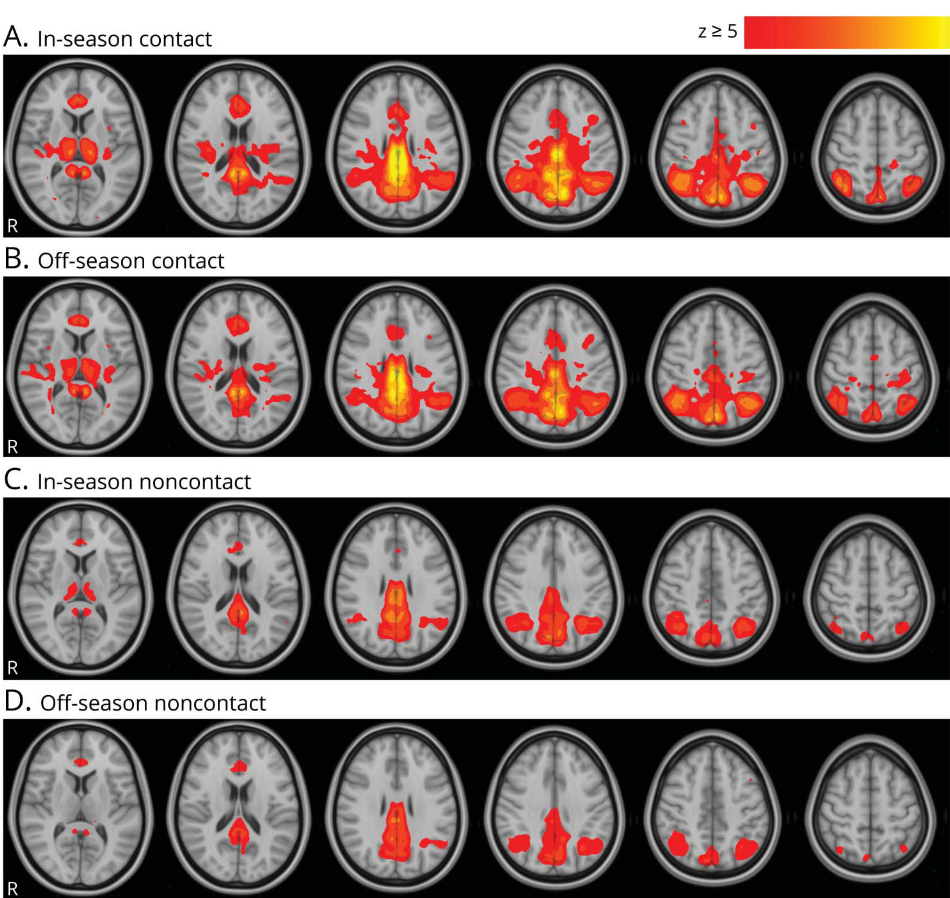Longitudinal changes of brain microstructure and function in nonconcussed female rugby players

Abstract
Objective To longitudinally assess brain microstructure and function in female varsity athletes participating in contact and noncontact sports.
Methods Concussion-free female rugby players (n = 73) were compared to age-matched (ages 18–23) female swimmers and rowers (n = 31) during the in- and off-season. Diffusion and resting-state fMRI (rs-fMRI) measures were the primary outcomes. The Sports Concussion Assessment Tool and head impact accelerometers were used to monitor symptoms and impacts, respectively.
Results We found cross-sectional (contact vs noncontact) and longitudinal (in- vs off-season) changes in white matter diffusion measures and rs-fMRI network connectivity in concussion-free contact athletes relative to noncontact athletes. In particular, mean, axial, and radial diffusivities were increased with decreased fractional anisotropy in multiple white matter tracts of contact athletes accompanied with default mode and visual network hyperconnectivity (p < 0.001). Longitudinal diffusion changes in the brainstem between the in- and off-season were observed for concussion-free contact athletes only, with progressive changes observed in a subset of athletes over multiple seasons. Axial diffusivity was significantly lower in the genu and splenium of the corpus callosum in those contact athletes with a history of concussion.
Conclusions Together, these findings demonstrate longitudinal changes in the microstructure and function of the brain in otherwise healthy, asymptomatic athletes participating in contact sport. Further research to understand the long-term brain health and biological implications of these changes is required, in particular to what extent these changes reflect compensatory, reparative, or degenerative processes.
https://n.neurology.org/content/early/2020/06/16/WNL.0000000000009821





